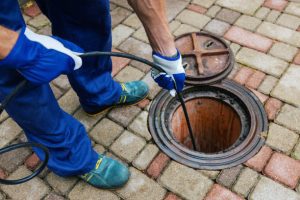Introduction:
Clean water is essential to every household. However, not all tap water is safe or pleasant to use. Depending on your area, water may contain minerals, chemicals, or even bacteria. Therefore, a reliable treatment system can improve your home’s water quality. But with many options available, choosing the right system can be confusing. Fortunately, understanding the main types will help you decide wisely. From filters to softeners, each system serves a specific purpose. As a homeowner, knowing what your water needs is key. This guide explains water treatment systems clearly to help you make the best choice.
1. Water Treatment Systems Explained: Whole-House Filters
Whole-house water filters treat all the water entering your home. These systems remove sediment, chlorine, and other contaminants. As a result, you get cleaner water from every faucet. This type is ideal for homes with unpleasant smells or taste in tap water. It also protects appliances from mineral buildup and corrosion. However, it won’t remove hard water minerals or pathogens. Choose a system with multiple filtration stages for better results. You should also test your water first to understand what needs filtering. When installed properly, whole-house systems offer long-term benefits and require minimal maintenance. They’re a smart investment for many households.
2. Water Softeners for Hard Water Problems
Hard water contains high levels of calcium and magnesium. These minerals can damage plumbing and reduce soap effectiveness. Water softeners use salt or potassium to replace these minerals. The result is smoother water that’s easier on pipes, skin, and hair. You’ll also notice fewer spots on dishes and less buildup in appliances. However, softeners don’t remove other contaminants like chlorine or lead. They’re best for homes with scale buildup or dry skin complaints. Always check your water hardness level before installation. Regular maintenance is needed to refill the salt and clean the tank. Overall, softeners make everyday water use more comfortable.
3. Water Treatment Systems Explained: Reverse Osmosis Units
Reverse osmosis (RO) systems use pressure to filter water through a semi-permeable membrane. This removes contaminants like lead, fluoride, and nitrates. These systems are often installed under the kitchen sink for drinking and cooking use. RO units are ideal for households concerned about taste or health risks. However, they waste some water during filtration, which may not suit all homes. The water may also lose helpful minerals, making it taste flat. Still, the high level of purification makes RO systems very effective. They’re perfect for families wanting clean, bottled-quality water at home. Regular filter changes ensure long-lasting performance.
4. UV Water Purifiers for Bacteria and Viruses
Ultraviolet (UV) systems disinfect water by destroying microorganisms. These units use UV light to kill bacteria, viruses, and parasites. Therefore, they’re excellent for homes using well water or water from unknown sources. UV purifiers don’t change taste or add chemicals. However, they don’t remove sediment or chemicals either. Often, they’re combined with filters for complete treatment. Installation is typically near the main water line or at the point of use. These systems work best with clear water, so pre-filtration may be necessary. Although low-maintenance, annual bulb replacement is required. For biological safety, UV treatment is a powerful option.
5. Water Treatment Systems Explained: Choosing the Right System
Every home’s water needs are different. First, get your water tested to identify contaminants and hardness levels. Then, consider your goals. Are you aiming for better taste, fewer minerals, or germ-free water? For general improvement, a whole-house filter is a solid choice. If you deal with hard water, consider a softener. For drinking water quality, reverse osmosis is highly effective. If bacteria is the concern, go with a UV system. Sometimes, combining systems offers the best results. Also, consider your budget, space, and maintenance capacity. Matching your system to your specific needs ensures you get the most value.
Conclusion:
Water treatment systems come in many forms, each designed to solve different problems. Understanding your water’s condition is the first step. Once you identify what needs improvement, you can choose the right system. Whether it’s filtering, softening, or purifying, each option offers key benefits. These systems help protect your health, appliances, and plumbing. While the choices may seem overwhelming, this guide simplifies the decision-making process. With water treatment systems explained clearly, you’re better equipped to choose wisely. Ultimately, clean water improves comfort and peace of mind in every home.
Interested in reading about Emergency Plumbing Do’s and Don’ts Until the Pros Arrive?





